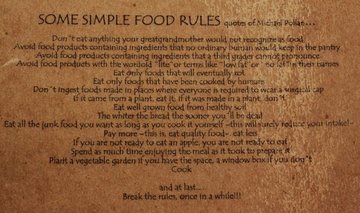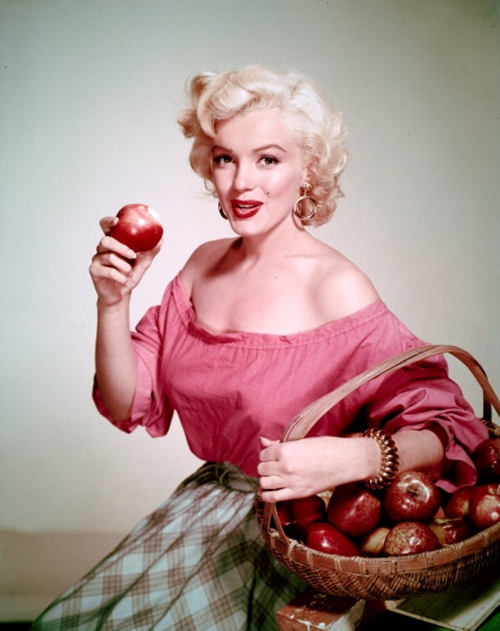We’ve all heard those words, “Don’t put that in your mouth,” either when we were a child and heard our mothers saying it to a younger sibling, or we’ve said it to kids we babysit, or if you’re a parent yourself you have probably uttered these words to your own children.
Of course, when we were children the things we were putting into our mouths were things like dirt, bugs, dirty fingers and toes and other unmentionables.
As adults, we now get to choose what we put into our mouths—there’s nobody there to hit the “bad” food out of our hands or tell us, “Don’t put that in your mouth.”
So how do we know?
I have read countless articles, watched a few documentaries and gathered so much information that, at the first mention of food, or any food conversation, I am spitting out information left and right (whether it’s asked for or not).
I began my “clean eating” journey in January of this year, and it was one of the best, and actually easiest, decisions I’ve made, since going vegetarian.
So what does it mean to eat clean?
If it was made from a plant, eat it.
The Gracious Pantry describes two common methods when describing clean eating:
- Simply eliminating all chemicals from your body and diets by avoiding any and all processed foods, and only eat when you’re hungry.
- Is typically the most common version of clean eating, eating only things made from plants (not in them by other humans), if you eat meat, only getting it from a butcher who can tell you everything about the meat you’re about to consume, eating only full, whole grains that have not be broken down or processed, read labels and only buy foods with three to six ingredients, any more than that and it’s likely processed, and eat five to six small meals every day!
I do a combination of both, and have brought my fiancé along for the ride, because clean eating is more fun with friends. When we do our grocery shopping, we spend a lot of time in the produce section, selecting organic fruits and vegetables that we will be eating for the week and incorporating into meals.
We then head into the specially designed organic area of the store to pick-up our other items, pasta, quinoa or bread. Before anything is placed in our cart we flip it, turn it, whatever needs to be done, to see the ingredient label.
If there is even one ingredient that we don’t know or cannot pronounce, it doesn’t come home with us.
We have even decided to sign up for a CSA, which is Community Shared Agriculture, from a local farm who will provide us with delicious, organic produce for the whole summer. We had heard a lot of great things about signing up for a CSA from friends who have done it in the past, and because of our recent “clean-eating” diet, we felt there is no time like the present to try a CSA for ourselves.
We will be receiving our CSA from Roots Down vegetable farm that is based just outside of Gananoque. There are many farms around the country that offer this kind of program for people interested in supporting local farms and farmers while getting nutritious and delicious organic vegetables.
The great thing about a CSA is you have the opportunity to use different vegetables and the excitement of picking up your basket every week to see what is inside—then decide what kind of delicious foods and dishes you will be able to make that week.
While CSA’s are a pretty big investment when you are paying for them upfront, it works out to be about $30 a week in fresh, organic vegetables from the farm, delivered weekly for 18 weeks.
I am excited to begin receiving the vegetables in a couple of weeks from Roots Down; the program begins in June and runs all the way through October.
If you’re interested in getting involved with a CSA and getting your own fresh, organic vegetables every week to begin your clean-eating journey, check out your local farmers markets, or ask friends and family to see if they have ever participated in a CSA to find out which farms they have used.
All of this “clean-eating” talk also makes me think about this quaint little place in Guatemala on Lake Atitlan called Isla Verde where they thrive while being a sustainable hotel.
All of the food they serve in their restaurant is sourced from their own garden or from gardens that surround the lake.
On the inside of their menus they have this printed:
 They also have a sign posted in the restaurant, and it’s reiterated on the pages of the menu, that the food will take slightly longer than normal to get to your table and that’s because they make everything fresh and ready to order.
They also have a sign posted in the restaurant, and it’s reiterated on the pages of the menu, that the food will take slightly longer than normal to get to your table and that’s because they make everything fresh and ready to order.
These simple food rules may seem like they would be a lot of work to keep up with, but in reality it is just about being aware of what you are eating and putting into your body everyday—after all, we only get one shot at this, why not do it properly?
Please some of your eat clean ideas and recipes in the comments.
Remember to stay healthy, and eat clean.
Love elephant and want to go steady?
Sign up for our (curated) daily and weekly newsletters!
Apprentice Editor: Amanda Fleming Taylor / Editor: Catherine Monkman
Photo(s): Provided by the Author











Read 14 comments and reply